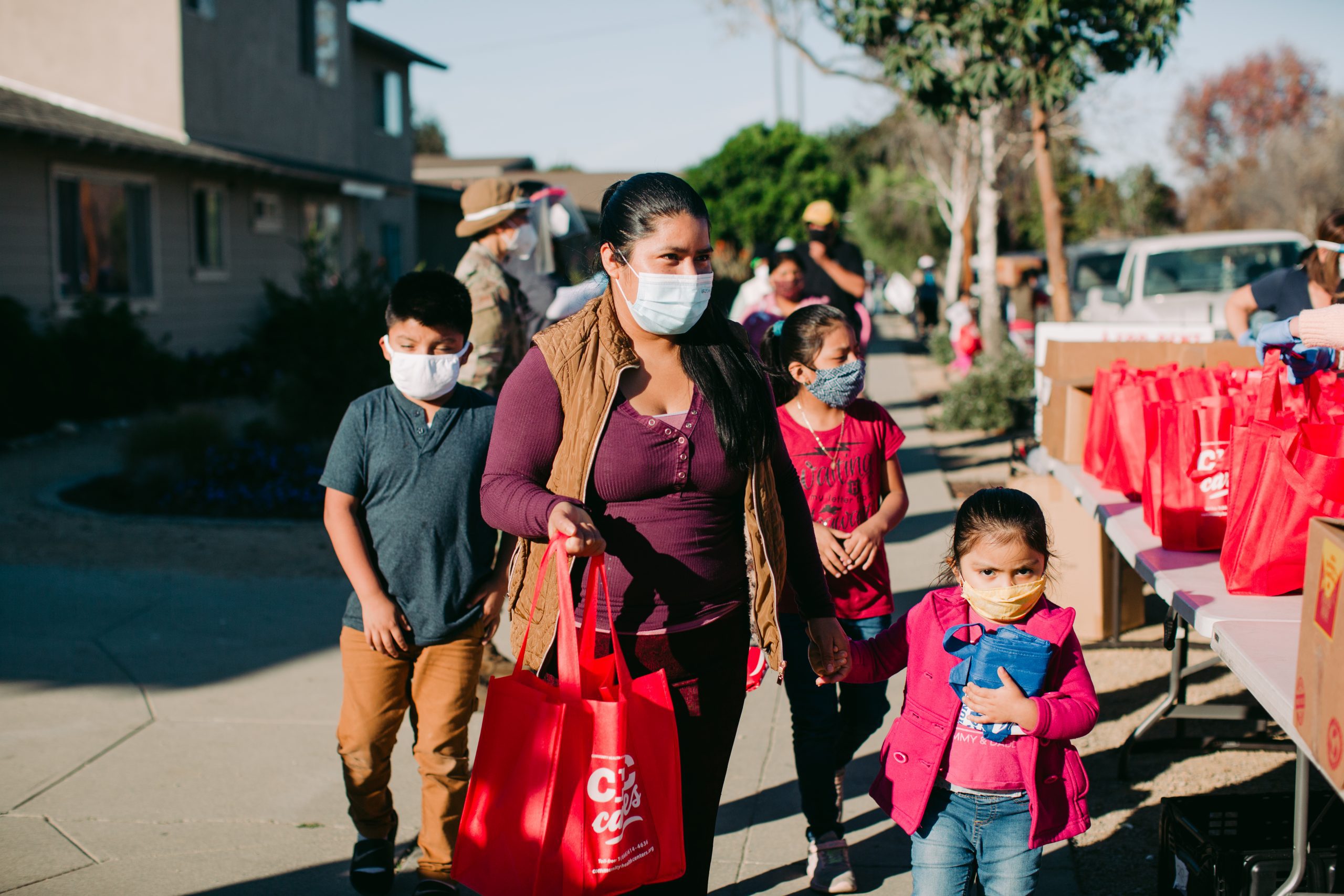County organization meets demand, expands partnerships to serve those in need
Staff Report
The Foodbank of Santa Barbara County has met twice (or more) the usual need for food assistance countywide for nearly one year since the COVID-19 crisis began in early March 2020. At that time, viral infections, mandatory stay-at-home orders, business restrictions and lockdowns began in California, plunging residents of Santa Barbara County into unprecedented need.
“I couldn’t be more proud of the Foodbank team and organizations across Santa Barbara County for working together to implement our Disaster Feeding Plan so swiftly and gracefully when the Covid crisis struck our area,” Foodbank CEO Erik Talkin said.
“We put our heads together, using lessons learned from the Thomas disasters, and mounted a creative, strategic response based on strong relationships and providing food at or near where people live. Our Covid response has endured and evolved over the course of a highly volatile year, proving how scalable and adaptable the Plan is.”
Within weeks, the Foodbank established the Safe Food Access for Everyone (SAFE) Food Net, working with county and city government disaster response agencies, nonprofit organizations, and the education, healthcare and business sectors. The Foodbank established 50-plus certified SAFE Food Net food distribution locations in neighborhoods throughout the county so residents could find food safely near their homes. More than 20 of the locations offered no-contact drive-thru service for enhanced safety.
Between March 9, 2020 and March 8, 2021, the Foodbank distributed 19,549,119 pounds of food, compared to 9,708,944 distributed between March 9, 2019 and March 8, 2020.
A home delivery program was launched that provided the 1,500 low-income seniors served by the Foodbank’s Brown Bag program with healthy groceries and fresh produce food at their doors, with 60,000 deliveries being made since March 9, 2020.
The Foodbank also enrolled more than 3,000 additional seniors in the Brown Bag program, providing triple the usual low-income seniors in the county with home deliveries. Households experiencing severe medical circumstances were provided with home deliveries by request.
As lockdowns and mandatory stay-at-home orders led to precipitous job and income losses and economic collapse, need for food assistance doubled countywide.
In order to meet the need, Foodbank procured additional physical capacity by acquiring additional warehouses in Santa Maria and Goleta to hold inventory and provide space for safely distanced volunteer efforts. Large refrigerated trailers were added at each of the Foodbank regular warehouses to expand cold storage. New trucks were purchased to transport food between north and south county, to deliver food to more food distribution sites and to expand cold food storage.
The Foodbank enlisted invaluable additional human resources via the following sources:
New hires, for a 15% increase in total paid staff; thousands of new community volunteers and interns, the California National Guard, AmeriCorps VISTA, Cesar Chavez Environmental Corps, Workforce Development Board / United Way’s dislocated workers program, Team Rubicon, and the Red Cross.
In order to reach community members about its efforts, the Foodbank also provided updated information via a collaboration with Santa Maria’s and the Santa Barbara County’s 2-1-1 service to offer live phone assistance to provide food location guidance and home delivery sign-ups, as well as paper flyers, downloadable PDFs and website listings and a bilingual text-to-find-food program to serve those without wifi or smart-phones.
The Foodbank has also launched new initiatives supporting local business and the community at large.
Among them were partnerships with local restaurants to provide meals to seniors and households in need; collaborations with school districts to provide boxes of healthy groceries and fresh produce to kids’ families where kids pick up their school lunches; and the Healthy School Pantry (HSP) program, among others.
Finally, in a time when health is a central concern, the Foodbank has pivoted to make nutrition education safely available to as many in the community as possible.
Food as Medicine, a series of free public presentations on eating for optimal health, moved from live events and periodic podcasts to interactive webinars covering topics including power of cruciferous vegetables, food and mood, digestion, and diet trends.
The Foodbank’s nutrition educations programs for children — such as Kids Farmers Market (KFM) and Food Literacy in Preschool (FLIP) — which normally take place during or after the school day, evolved into a hybrid model incorporating both activities and information sent home with food boxes for students’ families, along with online education modules and videos for students.




